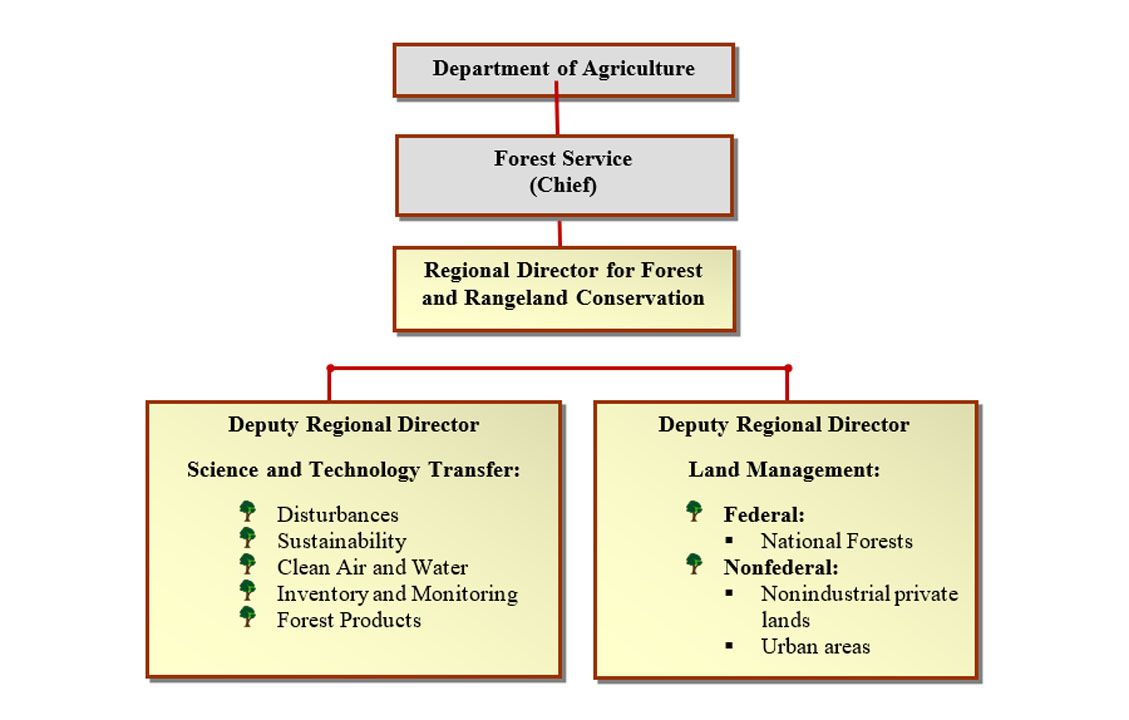
MICHAEL RAINS: “TOP NOTCH LEADERSHIP SKILLS ARE KEY.”
Editor’s note: This is the fourth segment of a five-part interview with Michael T. Rains, who was Director of the Northern Research Station at Newtown Square, Pennsylvania for 15 years and, concurrently, Director of the Forest Products Laboratory at Newtown Square for three years. He retired from the U.S. Forest Service in 2016. In earlier capacities, he was Deputy Chief of the Forest Service for State and Private Forestry, Washington, D.C.; Director of State and Private Forestry for the Northeastern Area, Radnor, Pennsylvania; and Director of Information, Resources Management and Business Operations for the Forest Service, Washington, D.C.
Mr. Rains attended five universities: Humboldt State at Arcata, California; the University of Mississippi at Oxford; Georgia State in Atlanta; the John F. Kennedy School of Government, Harvard University, Cambridge, Massachusetts; and West Chester University at West Chester, Pennsylvania. His undergraduate degrees are in forestry, economics and labor relations, and his master’s degrees are in public administration, watershed management and secondary education.
We have known of Mr. Rains and his exceptional work for many years, most recently through the National Wildfire Institute, founded by our colleague, Bruce Courtright. When we were preparing questions for Interim Forest Service Chief, Victoria Christiansen, Mr. Rains volunteered to answer the same questions, in part because his name made the rounds before Tony Tooke was named Chief. Mr. Tooke recently resigned amid sexual harassment accusations. Ms. Christiansen was named Interim Chief days later. You will find our subsequent interview with Ms. Christiansen posted elsewhere on our site.
When Agriculture Secretary, Sonny Perdue, announced Ms. Christiansen’s appointment, we asked Mr. Rains for his assessment because she worked with him as part of the Forest Service leadership team when he was running the Northern Research Station. He expressed great pleasure in her appointment.
Mr. Rains is a brilliant but exceedingly humble man, so when he agreed to answer these questions, he wanted it made clear that he was “simply sharing his voice” with anyone interested in his perspectives.
EVERGREEN: Can you sketch the revised Forest Service organizational chart you envision for us?
RAINS: Sure. The predominate roles I see at every organizational level in the Forest Service break down like this:
National Office:
- Policy development.
- Broad oversight in policy deployment.
- Linking-pin functions - seeking and developing land management opportunities, including new, innovative cost-effective solutions.
Regional Offices and Research Station Headquarters:
- Policy deployment.
- Ensuring program consistency (Regional level).
- Solving Regional level program delivery obstacles with State and Federal Regulatory Agencies.
- Convener of interagency and intergovernmental collaboratives to deliver services across interagency lines.
Supervisor’s Office:
- Program guidance.
- Budget allocations.
- Ensuring program consistency (forest level).
- Engaging local governments to reconnect service delivery of programs supporting economic vitality.
- Mentoring and Training of District and Forest workforces.
District and Research Projects:
- Program development and project execution (project level work including Sale Administration).
- Local partnership development with communities, permittees and stakeholders.
- Budget execution and tracking.
- Science and technology implementation, enhancing landscape-scale conservation while increasing services to the public.
- Emergency Response and coordination.
- Partnerships with the Research Division for technology and innovation of project designs and study to increase the resiliency and health of the nation’s forests.
EVERGREEN: Can you plug these roles into a schematic, so we can what a reorganized Forest Service might look like at all levels?
RAINS: I can. From the National Office through the Regional Offices, it would look like this:

EVERGREEN: If simplicity equals increased efficiency, this looks pretty good.
RAINS: I think so, too. The dominant feature of this organizational design is a corporate Forest Service that will emerge bolstered by a consistent, powerful voice of one overall executive leader_._
The Regional Director for Forest and Rangeland Conservation is the lead field Senior Executive. In this example, the number of Regions and Regional Offices can and should be reduced. Research Station headquarters can be eliminated. More and more funds are pushed to the lowest level – the Ranger Districts – where on-the-ground projects get done.
I could make a strong case for FIA to be placed under science or land management. FIA is the “Chief’s Census for America’s Forests.” Most people think that FIA is a research tool for the states, but most in FIA believe they are independently mandated by an Act of Congress, so there are some internal and external confusions about who does what.
My instincts tell me to assign FIA to the “Deputy Regional Director for Land Management” at the field level. At the national level, I am not sure. It simply does not seem like a good fit in research, and the growth that FIA programs need cannot materialize within the Research and Development mission area.
Given its critical role FIA data plays in good forest stewardship decision-making on all lands across all ownerships, I think FIA should be viewed as a classic corporate tool for the Forest Service and managed and funded accordingly.
EVERGREEN: We’ve been using FIA data for years and consider it to be the gold standard where forest data is concerned, so we agree that it ought to occupy a place on the organizational chart that connotes its critical strategic importance to all forest landowners. It then needs to be funded at a level commensurate with its importance to all public and private landowners.
RAINS: Agreed. With a configuration like the one I’m suggesting, program direction immediately becomes more cohesive, consistent and comprehensive to be more competitive, now and ahead. Top notch leadership skills are key. Some cost savings would be realized immediately, with most reduced operating costs coming in years three to five.
EVERGREEN: Would it be fair to say the Forest Service’s current organizational structure is outdated?
RAINS: It is outdated. Improvements to ensure a more optimal organizational structure must take place. Savings can be immediately redirected to the District levels for land stewardship projects. Devoting upfront time to organizational design will yield more precise staffing levels based on role definitions.
Implementation can take place over time. For example, if you have a traditional Director vacancy in a Research Station, consider a “Deputy Regional Director for Science and Technology Transfer” assigned to the Regional Director. Instead of having two communications groups, you move to one. As reassignments and retirements take place, flexibility increases dramatically.
EVERGREEN: So how does this road lay out before you?
RAINS: If I were Chief?
EVERGREEN: Yes.
RAINS: Improved organizational efficiency – as we have discussed it here -would be one of four top priorities. The other three are: restoring fire to the landscape, landscape scale conservation along a complex rural to urban land gradient, and community stability – a “Jobs in the Woods” initiative with a goal of creating 300,000 new jobs.
EVERGREEN: Serial litigators are still making life miserable for the Forest Service. We favor baseball-style binding arbitration. Let the best management ideas prevail consistent with prevailing forest plans. Do you agree and, if not, why not?
RAINS: I could not agree more. I think the Forest Service does a grand job of evaluating the impacts of land decisions. People dedicate their work lives to sustaining the health, diversity, and productivity of the nation’s forests and grasslands for present and future generations. It’s not a catch phrase. Yet it takes just one person – some very well intentioned – to halt all action. For a nation founded under democratic principles this feels very unfair to me. There needs to be better balance. Some mechanism to achieve this should be a top tactic and demand our best efforts.
EVERGREEN: NEPA, NFMA and ESA have become vast feeding grounds for serial litigators. The original laws seem well -intended, but the growing body of rules and regulations that accompany these laws – survey and manage, for example – have become serious roadblocks in the path to better management. What can we done to unravel this regulatory quagmire?
RAINS: I know this sound a bit naïve, but I would first go back to a magnificent effort led by a former Forest Service employee Chuck Myers in 2002. It was called “The Process Predicament: How Statutory, Regulatory, and Administrative Factors Affect National Forest Management.” Recall, the report surfaced three problems:
- Excessive analysis.
- Ineffective public involvement.
- Management inefficiencies.
At the time of the report, it was stated that about 40 percent of all the work at the National Forest level was from planning and analysis. The key conclusions of the report included reforming Forest Service processes and working more with partners. Again, this is a terrific piece of work.
So, I would dust the report off and re-calibrate how efficient our current planning and analysis process are and what is the effectiveness of our partnerships at trying to address this apparent conundrum.
EVERGREEN: Like peeling away the layers of an onion.
RAINS: Precisely. In answering one of your earlier questions, I stated an intention to convene a “Commission on the Stewardship of America’s Forests.” The 2002 report by Myers should be an important piece of that agenda. With key public-private partners at the Commission, establish a working foundation for change. Then, diligently and respectfully proceed forward, working with key Members of Congress along the way in the discussion. Breakthroughs will happen; then more. Trust will develop and then perhaps even flourish. It will take time. Gladiator armor and swords must be laid down – as some already are (witness the Forest Collaboratives). The other choice: a continued predicament on far too many landscapes.
EVERGREEN: The citizen-led forest collaboratives that have sprung up in the Intermountain West look to us to be the “get out of jail free” card Congress and the Forest Service have needed. Even federal judges seem to admire their work. As the next Chief, will you make cooperating with forest restoration collaboratives the official policy of the Forest Service, and, if not, why not?
RAINS: I would absolutely make them be an official tactic of two areas of focus: Restoring Fire to the Landscape, and landscape Scale Conservation Along a Complex Rural to Urban Land Gradient. This is an area in which I need to improve my knowledge. I think I am dated. Both the Collaborative Forest Landscape Restoration Program and the Joint Chiefs’ Landscape Restoration Partnership seem to effectively advance the spirit of conservation that our publics deserve. Recall earlier I stated the need to increase Forest Service funding by at least $1.3 billion. Sustained funding for these collaboratives would translate into improved fire management and build stronger coalitions across a wider-range of landscape, thereby expanded the overall support base of the agency.
Postscript: Coming up next, Mr. Rains discusses Forest Service performance standards, the West’s wildfire crisis and his associated letters to President Trump.





